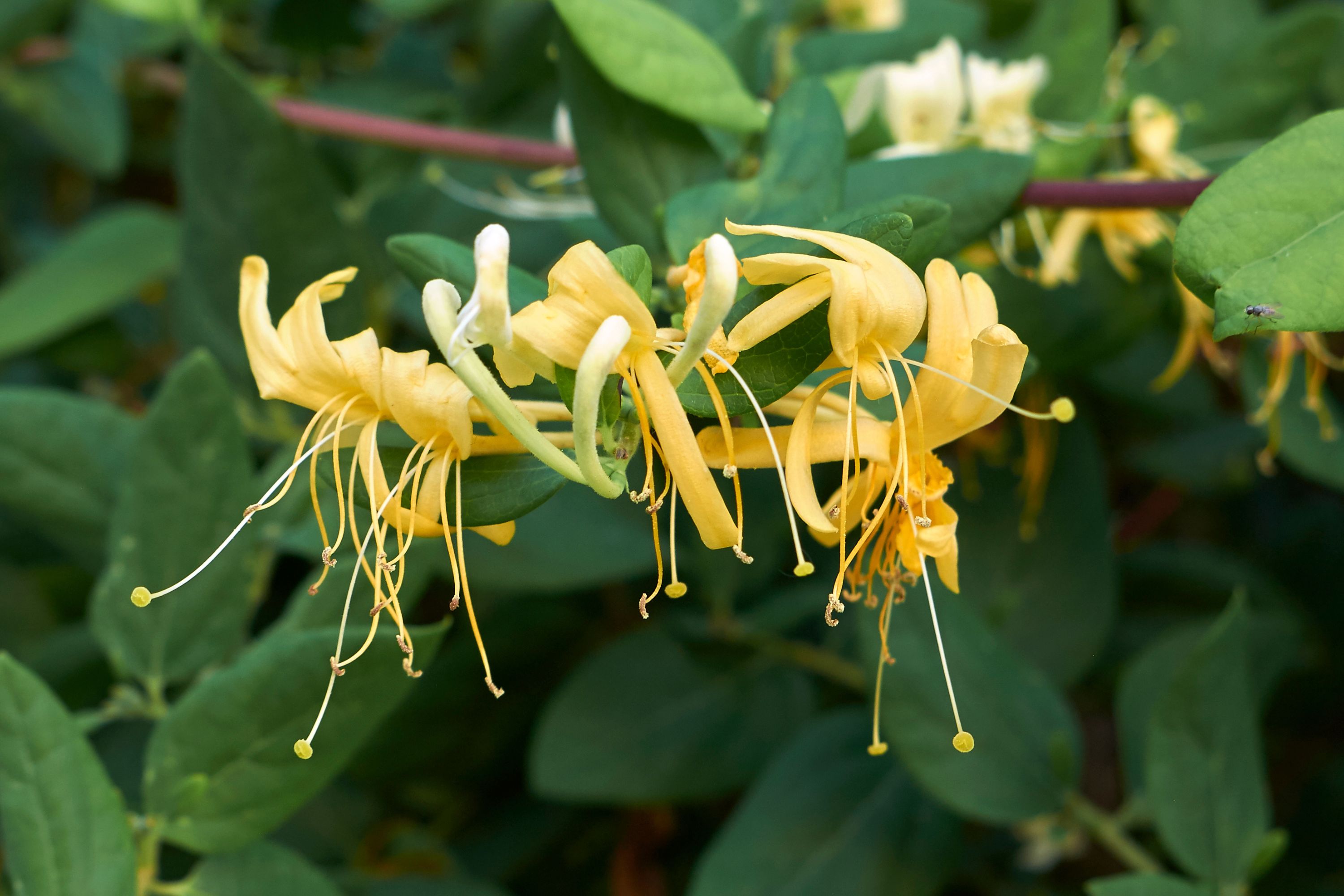Japanese honeysuckle
(Lonicera japonica)

Description
Lonicera japonica, commonly known as Japanese honeysuckle, is a fast-growing vine that belongs to the honeysuckle family Caprifoliaceae. Native to eastern Asia, this plant has been introduced to many parts of the world as an ornamental plant, and has become invasive in several regions, including North America. In this article, we'll delve deeper into the characteristics, cultivation, and uses of Lonicera japonica. Taxonomy and Nomenclature The scientific name of Japanese honeysuckle is Lonicera japonica Thunb. The genus name "Lonicera" honors Adam Lonitzer, a German botanist, while the species epithet "japonica" means "of Japan," where the plant is native. Common Names Japanese honeysuckle is known by several other common names, including Hall's honeysuckle, Chinese honeysuckle, and honeysuckle vine. It is also sometimes referred to as woodbine, although this name is more commonly used for other species in the Lonicera genus. Description Japanese honeysuckle is a deciduous, woody vine that can grow up to 30 feet long. It has thin, twining stems that can climb by twining around trees, shrubs, or other supports. The leaves are opposite, oval or heart-shaped, and dark green, with a slightly glossy surface. The flowers are fragrant and tubular, with white or yellowish petals that turn pale yellow with age. They bloom from late spring to early summer and are followed by small, black berries. Cultivation Japanese honeysuckle is easy to grow and is widely cultivated as an ornamental plant in many parts of the world. It prefers well-drained soil and full to partial sun, but can also tolerate some shade. It is hardy in USDA zones 4-11. Propagation Japanese honeysuckle can be propagated by stem cuttings, layering, or by seed. Cuttings should be taken from young, green stems in the spring or summer and rooted in a well-draining potting mix. Layering involves bending a young stem down to the ground, covering it with soil, and waiting for it to root before separating it from the parent plant. Seeds can be collected from ripe berries in the fall and sown directly in the ground or started indoors. Invasive Species Japanese honeysuckle is considered an invasive species in many parts of the world, including the United States, Australia, and New Zealand. It can outcompete native plants and damage natural ecosystems by forming dense mats that smother other vegetation. It is especially problematic in wooded areas, where it can climb up and over trees, blocking out sunlight and causing them to die. Uses Japanese honeysuckle has several traditional medicinal uses in eastern Asia, where it is believed to have antibacterial, anti-inflammatory, and other healing properties. It is used to treat sore throat, fever, asthma, and other respiratory ailments. In addition to its medicinal uses, Japanese honeysuckle is also used in traditional Chinese and Japanese tea ceremonies. The sweet nectar from the flowers is extracted and used to flavor teas and other beverages. Conclusion Lonicera japonica, or Japanese honeysuckle, is a fast-growing vine that is widely cultivated as an ornamental plant in many parts of the world. While it has traditional medicinal and culinary uses, it is also considered an invasive species in many regions and can cause harm to natural ecosystems. As with any plant, it is important to carefully consider the potential impact of introducing it into a new environment before deciding to cultivate it.
Taxonomic tree:







